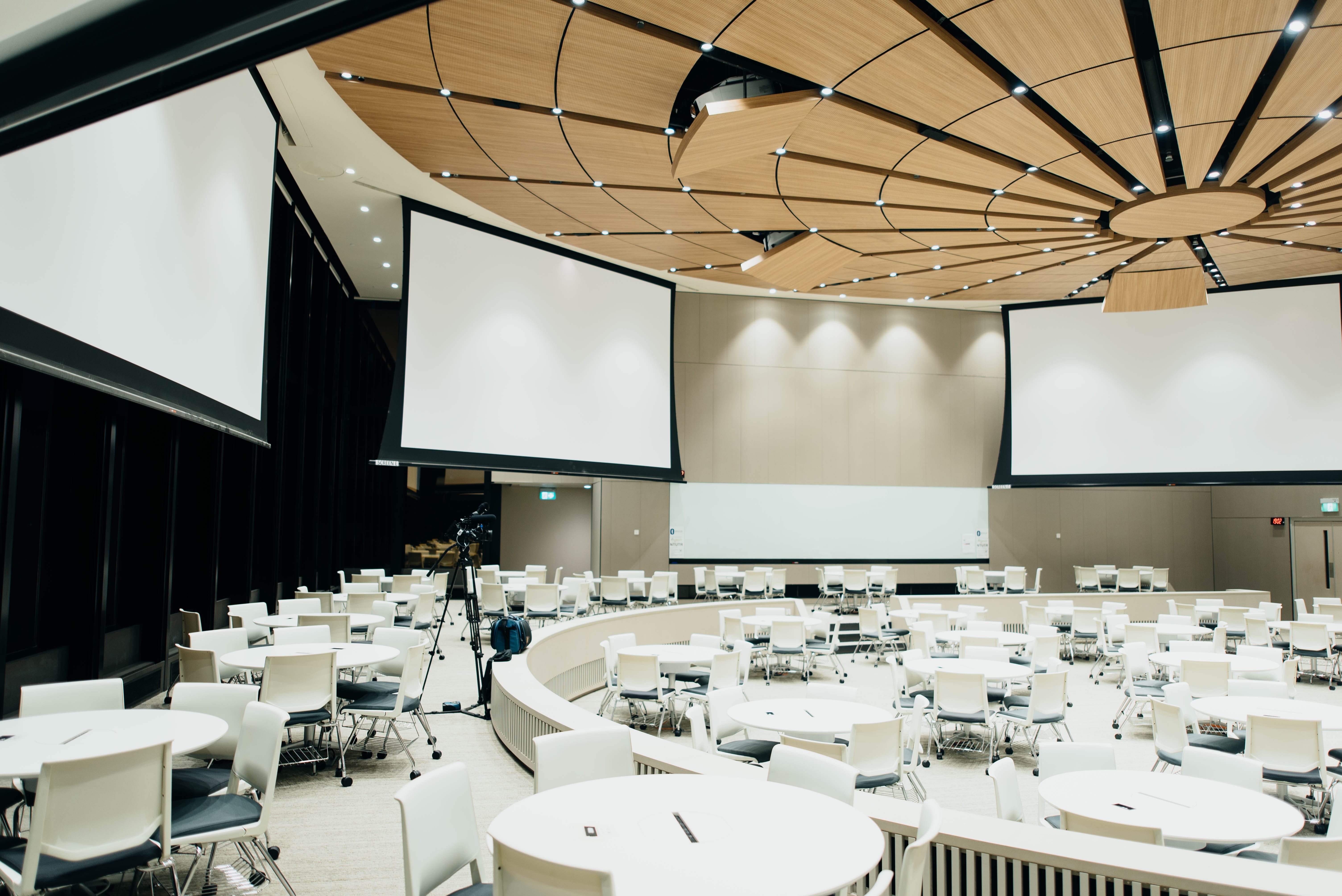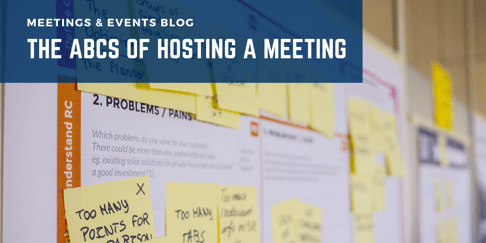
MeetingPackage
How many of you here have attended a meeting that was scheduled for 30 minutes but ended up 2 hours long?
You can almost hear a collective groan whenever someone says the word “meeting”. This type of event is almost universally hated because many attendees think that they are a waste of time.

Here are some reasons why attendees hate meetings:
- Poor preparation usually results in wasted time. Many people have missed other meetings and deadlines because of meetings that ran longer than they should.
- Bad management happens when the organizer goes off track. Meetings are usually needed for better exchange of ideas. However, when nothing is resolved or when there is no decision reached, the purpose of the meeting has failed and this is because of poor management from the organizers.
- We’ve all been in meetings where only 1 person did all the talking. While this type of meeting is usually alright, attendees feel uninvolved or unfulfilled when their ideas or input are ignored.
But what if you can do things differently? There is a lot of pressure for organizers to make meeting successful so that attendees will come back next time. The good news is that hosting meetings is relatively easy especially if you know the ABCs.
Let’s explore the basics of hosting a meeting so that you can plan a successful event.
Define The Objective
Meetings without a definite objective are a waste of time. If you want your meeting to be a success, you need to define its purpose. What type of meeting will you be hosting? What do you want to achieve? Are you just checking in with your team? Is it a brainstorming session? Are you pitching a new product to investors?
The purpose is important because it is the reason to hold the meeting in the first place. Additionally, it also sets the tone of the meeting. Is it a formal meeting or an informal one?
The easiest way to define the objective of your meeting is to ask yourself “what are we meeting about?”. There are many different kinds of meetings but not all of them are equal or have the same purpose.
This is why meetings should have an agenda. It allows attendees to know not only the purpose of the meeting but also the topic of discussion as well as the time allotted for each subject. Agendas are important because you don’t want attendees to think that they weren’t needed in the meeting or that they came to the meeting unprepared.
Most of all an objective will let people concerned talk about what the meeting is about.

The Attendees
Who’s invited?
Once you know the purpose of the meeting, you now know who needs to be there. Don’t invite just anybody. People in the meeting should be there because they need to attend. Some organizers invite people who only worked peripherally on the project. Avoid this temptation because these people will only feel out of place during the meeting. You’re not being rude; in fact you’re being considerate of their time.
When hosting meetings it is important to remember to keep the numbers to a minimum. This will not only make meetings more efficient, it will also lessen frustration of attendees. It is also important to send invites early so that people can accept or decline in a timely manner. Give yourself time to follow-up guests as well. Hosting meetings is all about planning and organizing and fortunately, the guest list is one of the easier parts.
Speaking of attendees, when you’re invited to a meeting you should attend. This may seem like common sense but it is not always followed.
However, there are times when you cannot attend. When this happens you can:
- Reply with a reason for not attending along with a proposal for a schedule.
- If plans have changed, let the organizer know as soon as possible.
- Inform the organizer if you’re going to be late as soon as you can.
- Let the organizer know you’re leaving early if this is the case.
This sounds like basic manners but there are times when attendees unknowingly double book themselves or they simply accept every meeting request. There are also people who tend to have crowded schedules and end up being unorganized and are unsure of their availability. If you find yourself in a similar situation, let the organizer know about your circumstances ASAP. Letting them know early will help them plan the meeting and increase the chances of its success.
Aside from being physically present in a meeting, you should also mentally be there. Don’t turn on your laptop or check your phone if it’s not need. Being participative in meetings will help your team become more productive and contribute to the success of the event.
It’s All In The Details
Now that you know the purpose of the meeting as well as the people who need to be there, you need to make the meeting engaging. Some organizers prefer to “wing it” but this usually leads to fewer accomplishments and a waste of time. This is why you need good content. You want attendees to participate in the meeting.
Ask yourself these questions for content creation for hosting meetings.
- What information, context or background can I provide attendees? Sometimes a simple agenda on the invite is not enough. If you want full participation, you might want to provide more details.
- How long does the meeting need to be? As we stated before, one of the reasons people don’t like meetings is that it takes up too much time. Ask yourself if what needs to be said and done can be done in 30 minutes, 1 hour or 2. Giving yourself a time limit will make the meeting become more efficient and keep your content to the point.
- Find ways to structure the meeting so that it is effective. For example, if it is a product launch you want to feature the details of the product or demonstration first before moving to the cost.
Location Location Location

One of the keys to a successful meeting is the location. Not all meetings can be held on the conference room of the office so the location of the meeting should depend on a number of factors such as:
- The number of attendees. There’s nothing worse than cramming in 10 people in a space that’s only good for 5. When you hosting meetings, you want guests to be comfortable. They should be able to move around easily.
- Type of meeting you will be hosting. For example, brain storming sessions can be held in a number of places such as coffee shops, the conference room or a small function room. Product launches on the other hand can be held in other venues such as hotels due to the high number of attendees.
- Time of day. Meetings held very early can become breakfast meetings or coffee meetings. This way attendees will want to come not only for the exchange of idea or information but for the food too. Timing is important because people have schedules and locations that are convenient can help make the meeting a success.
- Whether you need special props or equipment. Product launches for instance need special equipment like projectors, sound systems and other audio/visual gear. Make sure that you can provide these props. Aside from having these equipment on hand, the venue should also be able to fit the different props needed for the meeting. For example, can the conference room at the office be furnished with a teleprompter? If not, moving to a better location is best.
Breaking The Ice
Not all meetings are with people who know each other. This means that not all meetings are team meetings so meeting the other party for the first time can be awkward.
This is why people who are good at hosting meetings know how important it is to break the ice. Even though you can’t guarantee that they will become fast friends during the duration of the meeting it is better if all attendees are relaxed. This is especially true if the meeting is early in the morning or late in the evening.
So what can you do to liven up the atmosphere? Here are some good icebreakers:
- The 2 truths and 1 lie game is very easy. Attendees are asked to make 3 statements. 2 of them are the truth and 1 of them is a believable lie. Other attendees have to guess which one is the lie.
- The candy game is another popular icebreaker because it involves food. Place different colored candy in a bowl and ask attendees to pick any color they want. However, they can’t eat the candy yet. Once everybody has their candy, ask a question for every color they take. For example for blue, their favorite book, for green ask them for their favorite kind of food, for yellow their hometown, etc. This is a fast and easy way to learn something about the other people in the room.
- The bowl of questions is very easy to do. Just place a bowl with folded paper. Inside the paper, write down some conversation starters. Ask all attendees to get a piece of paper. If they don’t like the question they can draw again. This is a good way to get people to open up quickly.
Eliminate Distractions
Smartphones are some of the most distracting gadgets today. Aside from the meeting, emails, social media and text messages, attendees have a lot on their mind during meetings so it’s very easy to get distracted. This can be disastrous for meetings because distracted attendees are less focused and productive.
Even President Obama knew how distracting smartphones can be because he always asked attendees to put their phones on a basket before entering a room for a meeting. While smartphones are easy to blame, a study by Udemy discovered that “small talk and office gossip” is the number 1 reason why people are distracted during meetings.
Here are some ways to avoid distractions and office gossip:
- Vent only on people you trust.
- Identify trigger situations or topics. For instance starting a conversation with “I’m going to tell you a secret you can’t tell anyone” is a red flag.
- Change the subject whenever somebody starts to gossip.
- Never repeat anything that should not be repeated.
Distractions keep you from hosting a successful meeting. Put away those smartphones and avoid gossiping during meetings.

End With An Action Plan
Finally, spend the last few minutes of your meeting to discuss what happens next. Decide on who should be responsible for what. Don’t forget to include a deadline for tasks that need to be completed.
In meetings where minutes were taken down, make sure that it’s circulated afterwards. Hosting meetings is not hard especially if you follow our tips above. A successful meeting will make everybody look forward to more meetings and banish those groans and sighs forever.




